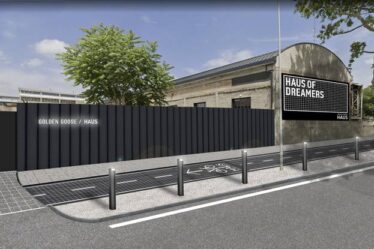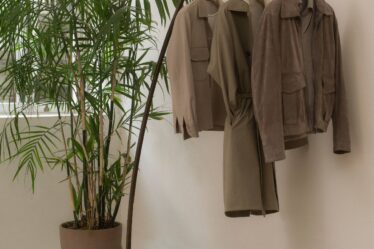
Food
Dutch food was once all meat, veg and potatoes, but in the 1950s migrants from all over the world started arriving and created the food culture we now have. A popular tourist market is Markthal with about 100 vendors, including Natamania, which sells delicious Portuguese pastéis de nata.
But my favourites are the Korean places in the Hoogkwartier area, home also to my restaurant, Coco, which serves food from the Caribbean, Suriname and Cape Verde. Bapboss serves the best spicy kimchi in town: I love its rice – cooking rice is an art – and the excellent galbi (marinated Korean beef rib) is sliced thin for the barbecue. Another must is Ox, a new Malaysian-Chinese pop-up: it’s small, stylish and hidden away (you’re given instructions on how to find it when you book). The menu changes regularly, but I’d eat everything there as the level of cooking – and the cocktails – is very high.
Inspiration
Het Nieuwe Instituut is the Netherlands’ national museum for design and culture, with interactive exhibitions on architecture, dance culture, music and fashion. I also like Mama, a gallery and creative space founded in 1997 on Witte De Withstraat, a buzzy street many tourists enjoy visiting. Mama aims to connect young people to art: it hosts performances, exhibitions and events.
Neighbourhood
I grew up in multicultural West Kruiskade. My parents came over in the 1950s from Cape Verde: back then they put all the migrants in the same neighbourhood. It might have been poor and ugly, but the people that live here have made it rich with their culture, whether from the Dutch colonies or Iran.

I especially love the tokos, the little bodegas where you can buy food from the Caribbean, sweet jam, plantain, fake hair, skin creams and shampoos. When I began studying French cuisine it was these tokos that gave me the inspiration to cook differently.
Rotterdam’s Chinatown is here, too – my top restaurant tip is Tai Wu, which has been open for 25 years – but there’s so much good food, from Spanish to Turkish. And Wijkpark, the local park, has art and a petting farm.
Green space
I live in Kralingen now, a more affluent but also studenty area. Its botanic Trompenburg Gardens are known for their biodiversity, with unique trees, shrubs and flowers. A highlight is the desert greenhouse, filled with cacti and succulents. It’s stunning. And, as the gardens are off the beaten track, they’re not often overcrowded, even when the sun is out.
Nightlife
I normally go to Baroeg, one of the oldest clubs in Rotterdam, which specialises in metal, punk and rock. Poing has retro arcade games and karaoke, and my favourite cocktail bar is Spikizi, where I always order a Moscow mule. The gay bars here cater mostly for men, but cool queer-friendly clubs include Worm, Tech Noir and Now & Wow in Maassilo, a renovated grain silo built in 1910. Look out for one-off LGBTQ+ events celebrating black ballroom culture. Drag queens and kings perform in many restaurants and other venues across the city.
Where to stay
Mainport (doubles from €115 room-only) is a design hotel on the banks of the River Maas. There is a terrace with views of the Erasmus Bridge and the old harbour, and on another floor there is a swimming pool overlooking the whole city skyline.
The historic Hotel New York (doubles from €122 room-only) is in the former headquarters of the Holland-America Line, and has a good fish restaurant. I also recommend Bazaar (doubles from €85 B&B) on Witte de Withstraat: its characterful bedrooms are inspired by Asia and Africa.
Manuela Gonçalves Tavares is the chef-owner of Coco, which specialises in Caribbean, Surinamese and Cape Verdean cuisine (temporarily closed but reopening soon), and the plant-based Het Nieuwe Café



